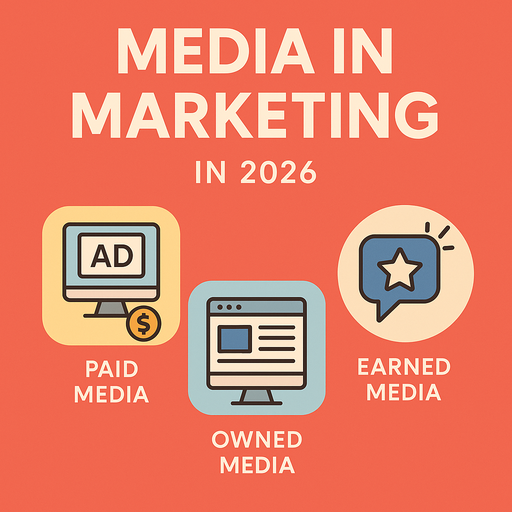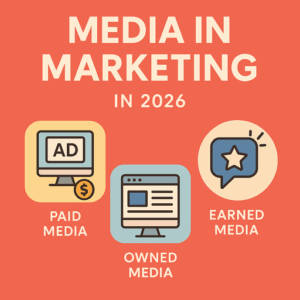In the B2B space, generating qualified leads is critical for sustained growth and long-term success. Unlike B2C, where purchases can be driven by impulse or emotion, B2B buying decisions are typically methodical, research-driven, and involve multiple stakeholders. This is precisely why B2B content marketing has emerged as a core strategy for attracting and nurturing prospects through complex sales cycles.
Let’s explore how your business can effectively use B2B content marketing to drive high-quality lead generation in today’s competitive digital landscape.
What is B2B Content Marketing?
B2B content marketing is the strategic creation and distribution of relevant, valuable content designed to attract, inform, and engage business decision-makers. The primary goal is to demonstrate expertise, build trust, and guide prospects from awareness to conversion—without overtly selling.
In practice, this involves content like:
-
Whitepapers and eBooks
-
Case studies
-
Blog articles
-
Webinars and videos
-
Interactive tools
-
Email newsletters
Each piece is crafted to educate your audience, address pain points, and support the buyer journey at different stages.
Why Content is Crucial in B2B Lead Generation
In B2B sales, buyers typically go through extended consideration periods and consult various team members before finalizing a purchase. Quality content ensures you stay part of the conversation throughout that journey.
Content allows your business to:
-
Educate different decision-makers
-
Address objections early
-
Position your brand as a thought leader
-
Stay top-of-mind across the sales cycle
Ultimately, well-crafted content turns cold prospects into warm leads—and warm leads into loyal customers.
Proven Strategies for Using Content to Generate Qualified Leads
1. Create Targeted, Problem-Solving Content
To engage business buyers, your content must speak directly to their challenges. Develop whitepapers, case studies, and how-to guides tailored to specific industries, job roles, or pain points. This shows that you understand their needs and have solutions to offer.
For example, a whitepaper that outlines cost-saving strategies for IT managers will resonate more than a generic product brochure.
2. Optimize Content for Search Intent and SEO
Most B2B buyers start their journey online. That’s why aligning your content with buyer intent and search behavior is essential. Use keyword research to identify terms your target audience uses during their research phase and optimize content accordingly.
SEO-optimized content improves your visibility on search engines and attracts inbound traffic that’s already looking for solutions—making it more likely to convert into qualified leads.
3. Use Gated Content to Capture Lead Information
Offering premium, high-value content behind a form—such as an eBook, webinar, or ROI calculator—allows you to capture lead information in exchange for access. This approach not only grows your email list but also filters for leads who are genuinely interested in your solution.
Make sure your gated assets are worth the trade. The more valuable the content, the more likely prospects will be willing to provide their contact details.
4. Nurture Leads with Personalized Email Campaigns
Once a lead has entered your system, consistent follow-up is crucial. Automated email campaigns can deliver personalized content based on the lead’s interests, behavior, and position in the buyer’s journey.
Segment your email list to send targeted messaging—for example, offering a demo to leads who downloaded a product guide, or sharing industry trends with those still in the awareness stage.
5. Incorporate Video and Interactive Formats
Modern buyers consume content in various formats. Incorporating video explainers, live webinars, or interactive tools like cost calculators adds variety and keeps your audience engaged.
These formats can simplify complex topics, demonstrate product capabilities, and improve conversion rates by making your value proposition more tangible.
6. Track, Analyze, and Refine Your Efforts
Effective content marketing doesn’t end at publishing. You need to monitor key performance indicators like traffic, bounce rates, time on page, lead quality, and conversion rates.
These insights help you identify what’s working and where to optimize. Double down on high-performing content and refine or retire underperforming assets to maximize ROI.
Key Benefits of B2B Content Marketing for Lead Generation
Implementing a strong content strategy provides several long-term advantages:
-
Builds Trust and Authority: Thoughtful, expert content positions your brand as a reliable partner in solving complex problems.
-
Educates Multiple Stakeholders: Tailored content helps reach various decision-makers with relevant insights.
-
Supports Long Sales Cycles: Content keeps prospects engaged over weeks or months.
-
Reduces Cost Per Lead: Organic traffic and inbound leads are typically more cost-effective than paid ads.
-
Improves Sales Alignment: Sales teams can use content to address objections, educate buyers, and close deals faster.
Challenges and How to Overcome Them
B2B content marketing isn’t without its hurdles. Common challenges include:
-
Producing high-quality, relevant content consistently
-
Aligning content with buyer journeys
-
Demonstrating direct impact on revenue
The solution? Invest in experienced talent—either internally or through a trusted content marketing agency. Skilled strategists, writers, and analysts can help you develop a repeatable, measurable content engine that delivers real business value.
Final Thoughts
In 2025, B2B content marketing remains one of the most effective ways to attract, educate, and convert high-value leads. When done right, it nurtures prospects through complex decision-making journeys and builds relationships that drive long-term growth.
For companies looking to elevate their lead generation strategy, MSM Coretech Innovations exemplifies how creative, data-driven content marketing can make a measurable impact. By combining industry expertise with innovative techniques, agencies like MSM Coretech help businesses break through the noise and turn content into a competitive advantage.









